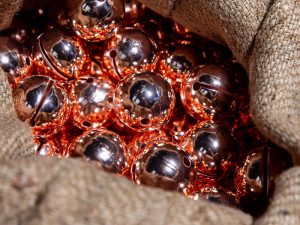- optics
- corrosion protection
- improvement of conductivity
- Improvement of the contact
- Adhesive base for further layers
- Wear protection
- catalysis
- Production of micro or macro structures
- Aerospace components
- Watches, jewelry, utility and decorative items
- electronic circuits
- sanitary fittings
- Machining, cutting and forming technology
- facade elements
- construction elements
- Templates for pressing
Basic distinction between decorative and functional layer. In detail, a galvanically generated layer can fulfill one or more of the following functions:
The areas of application for electroplated layers are incredibly diverse, which is why electroplating is omnipresent in everyday life and it is impossible to imagine life without it.
Carrier materials:
Iron and steel alloys, non-ferrous metals, aluminum
Characteristics:
- decorative appearance
- Good electrical conductivity
- Food safety
- corrosion protection
- excellent soldering skills
- RoHS compliant
Application:
- decorative surfaces
- electrical contacts and components
- Food industry
- Products that come into contact with food
Carrier materials:
Iron and steel alloys, non-ferrous metals, aluminum
Characteristics:
- very good electrical conductivity
- particularly suitable for the electrical and electronics industry
- very good spreadability
- Specific electrical resistance 1.66 μΩ x cm
- Hardness of coatings 80 – 120 HV0.05
- bright, glossy and haze-free coatings
- high-gloss, decorative coatings on request
Application:
- electrical contacts
- Avoidance of fretting corrosion and seizure in engine construction
Carrier materials:
Iron and steel alloys, non-ferrous metals, aluminum
Characteristics:
Controllable optics through different electrolytes. From matte to satin to high-gloss nickel. Corrosion-inhibiting, application and appearance-defining surfaces, and as an intermediate layer for decorative chrome plating, gold plating, etc.
Application:
- universal coating for many components
- Basis for special effects in furniture, lighting and luminaire, fixture and appliance manufacturing
Carrier materials:
Iron and steel alloys, non-ferrous metals, aluminum
Characteristics:
- decorative appearance
- Good electrical conductivity
- corrosion protection
- High-performance electrolyte for the deposition of bright, smooth, fine-crystalline and ductile copper layers
- primarily serves as a precopper electrolyte
- Advantage: Steel and aluminum can be copper plated directly
Application:
- decorative surfaces
- Intermediate layer on many base materials for subsequent coatings
- Intermediate layer- mechanically polished for the highest requirements in terms of appearance and corrosion protection.
- Improvement of conductivity, reduction of contact resistance of electrically used parts
Carrier materials:
Iron and steel alloys, non-ferrous metals, aluminum
Characteristics:
- good metal distribution and excellent hiding power
- Coatings are fine-grained, moderately glossy and ductile
- high-gloss, decorative coatings on request
Application:
- Intermediate layer on many base materials for subsequent coatings
- Intermediate layer- mechanically polished for the highest requirements in terms of appearance and corrosion protection.


